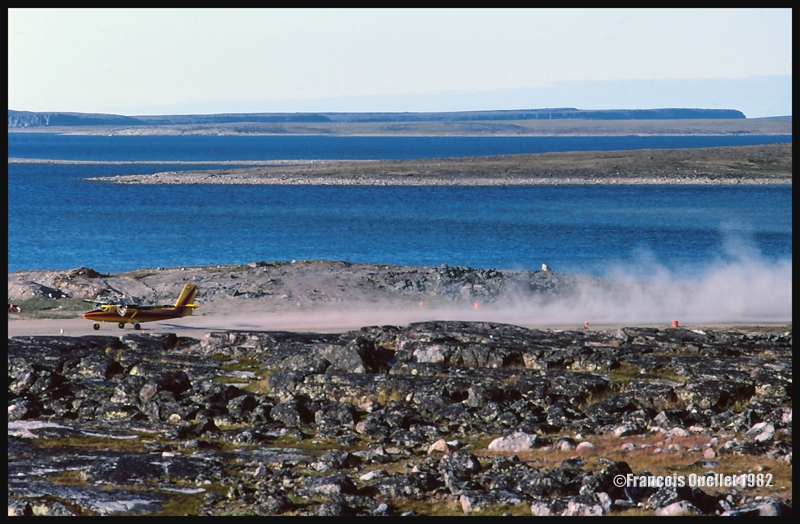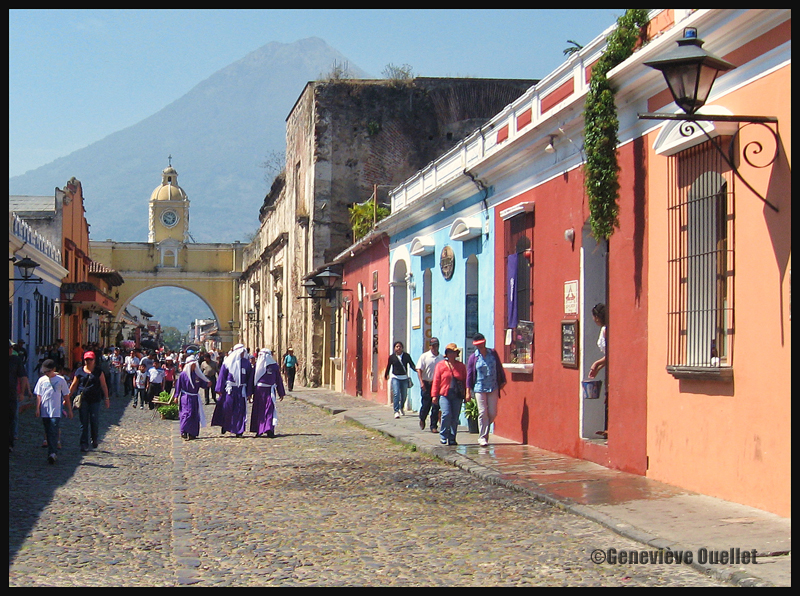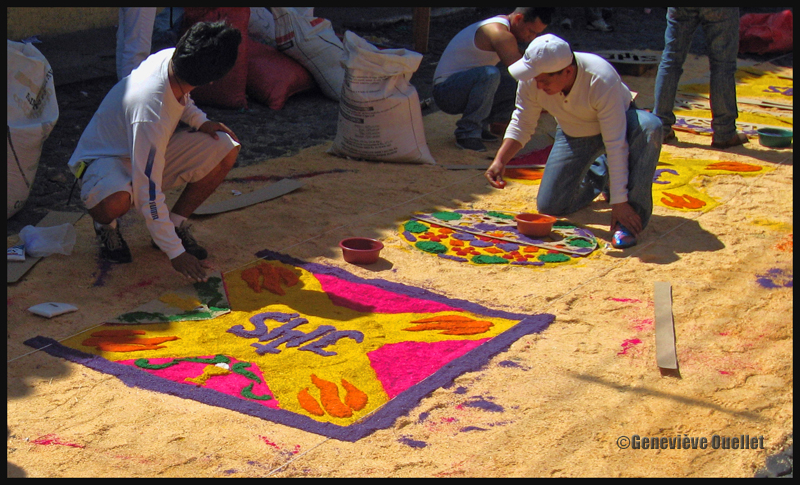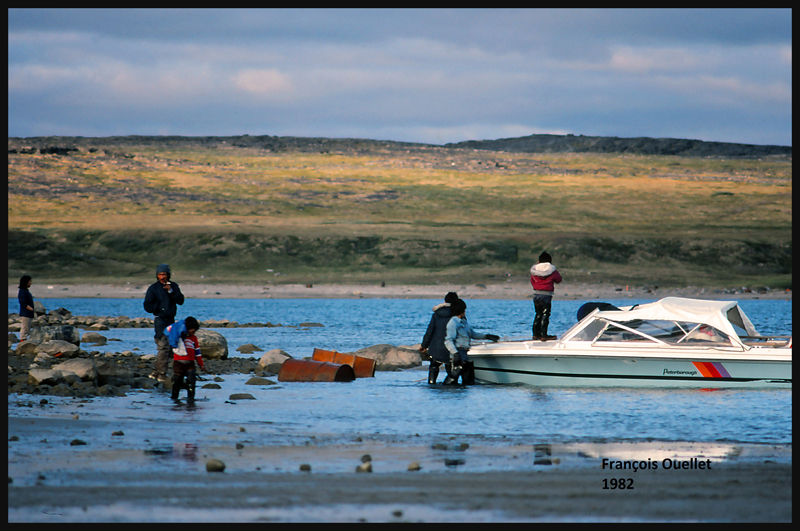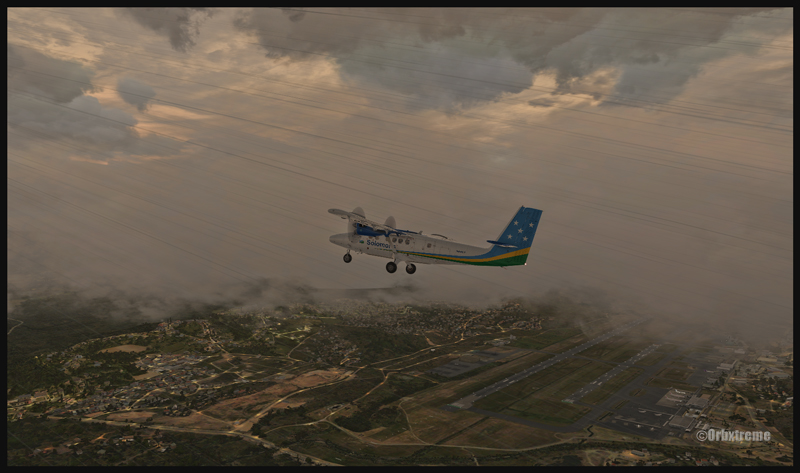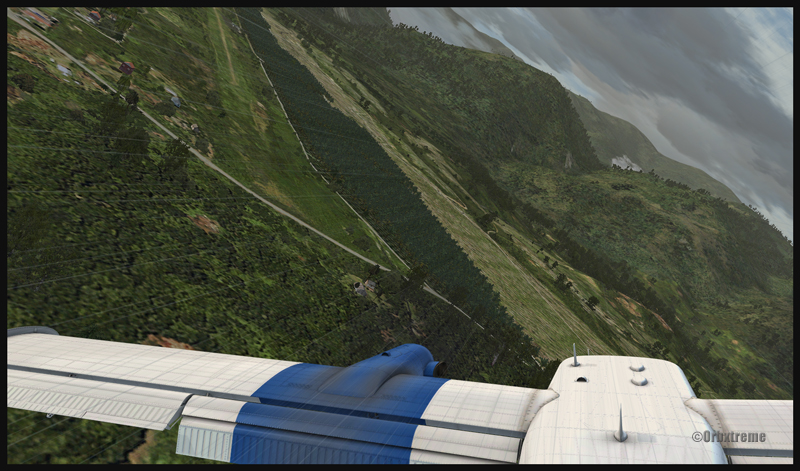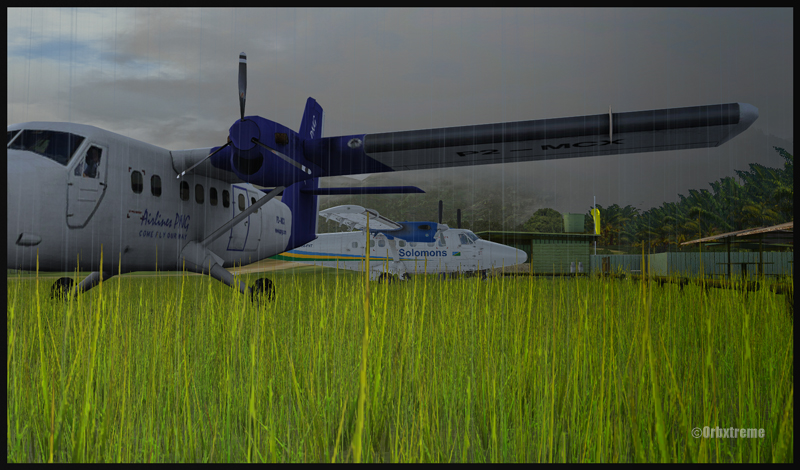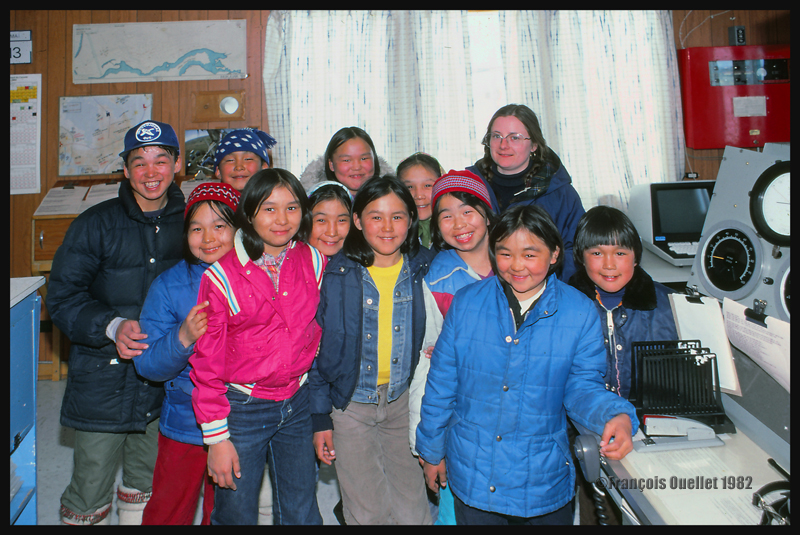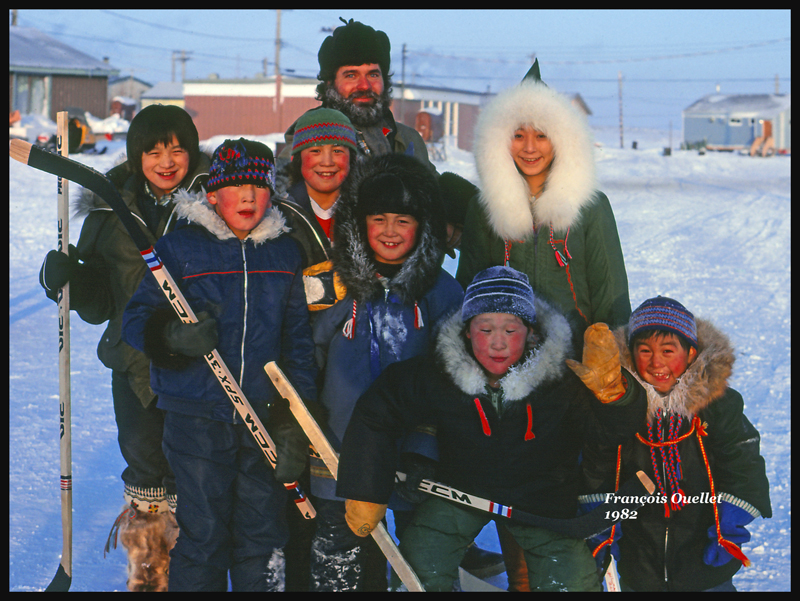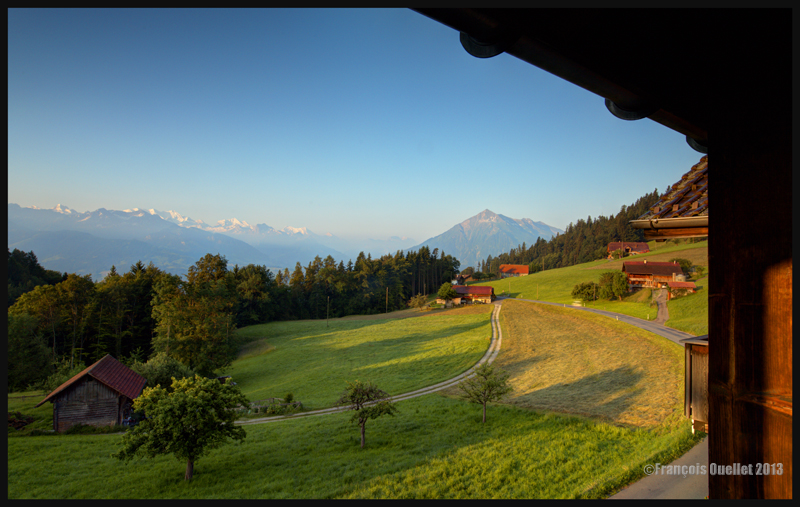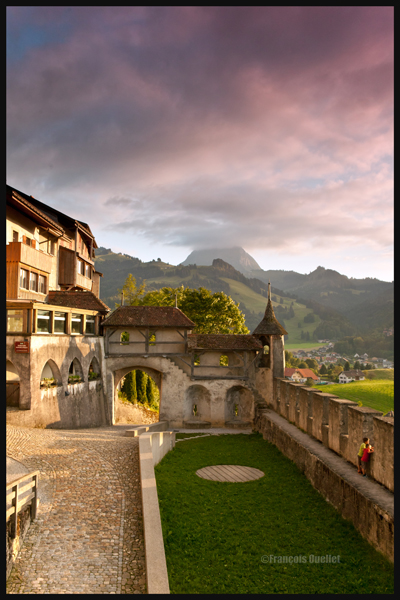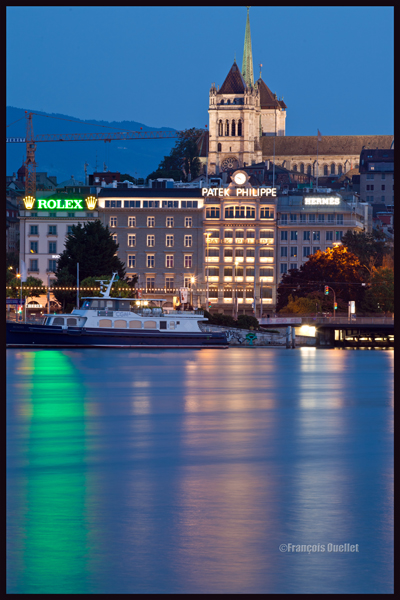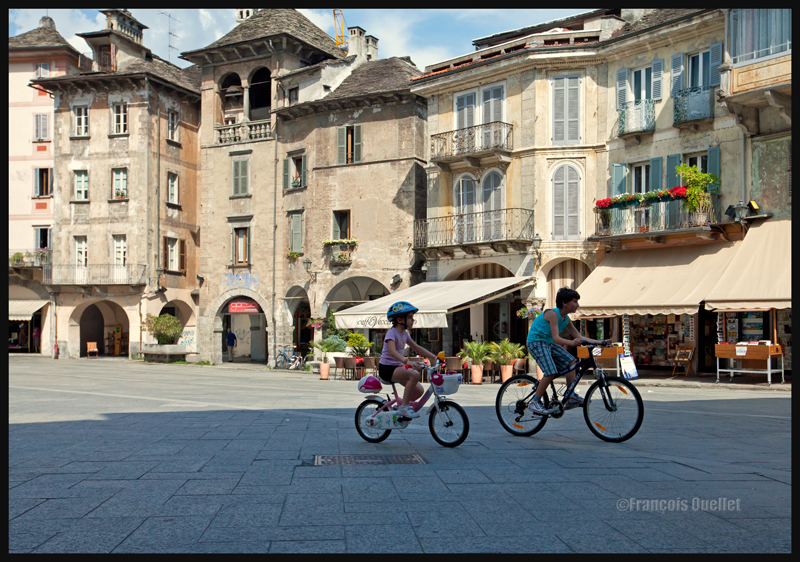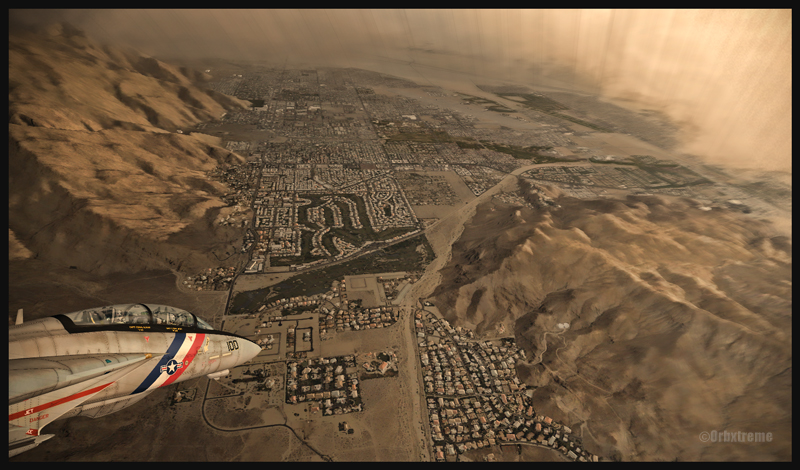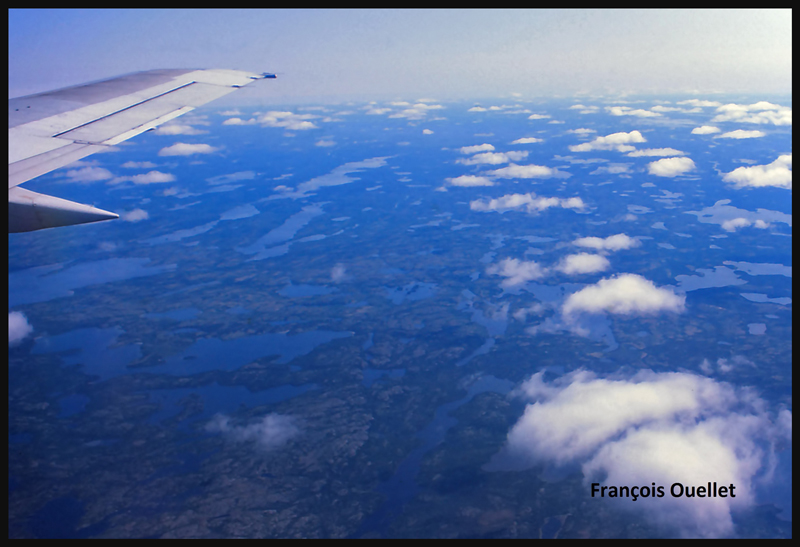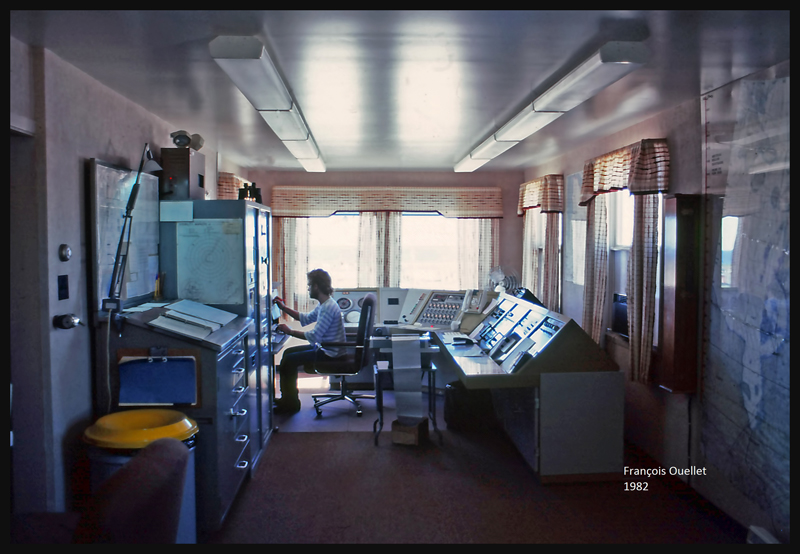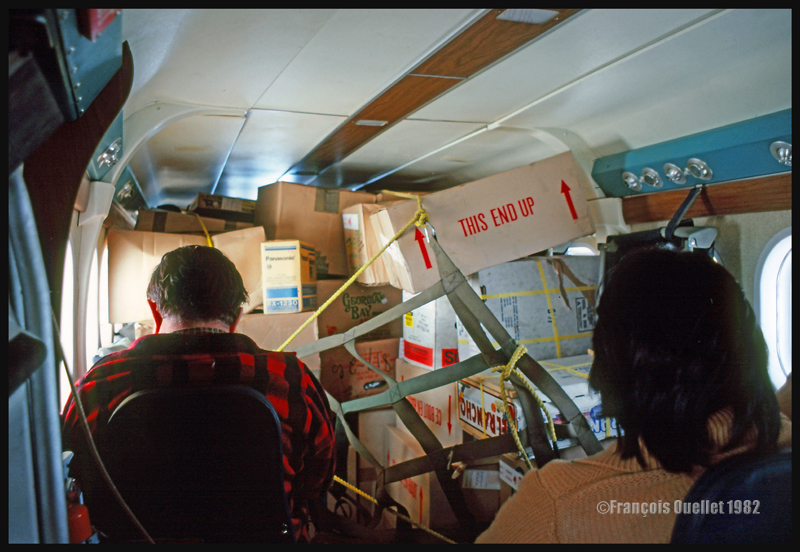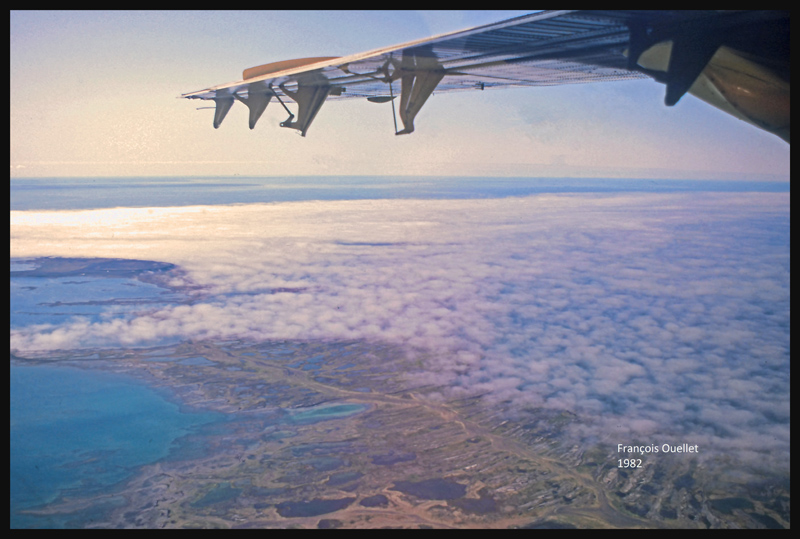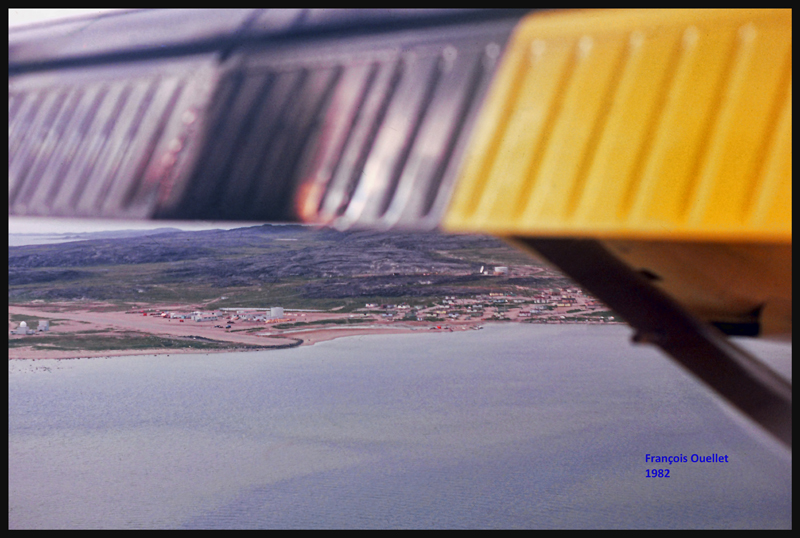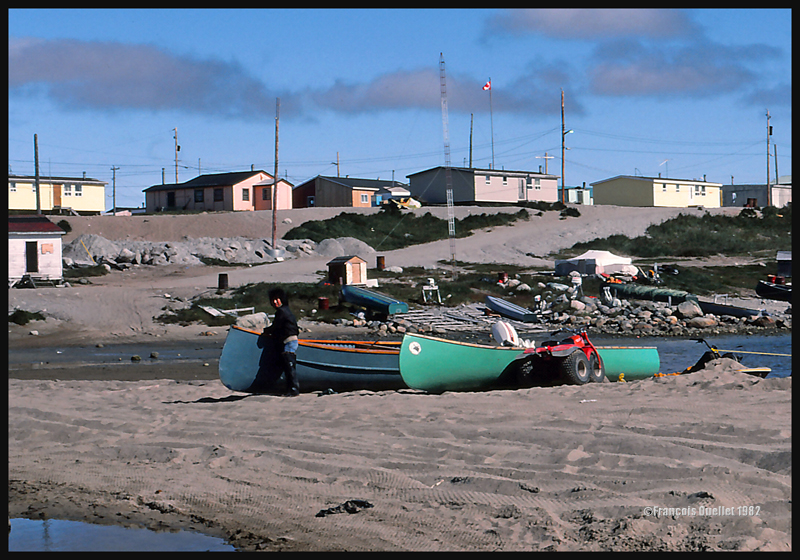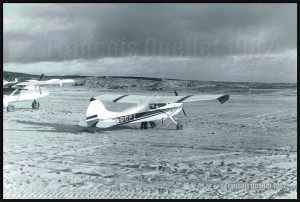Those two pictures have been added recently in the “photo galleries” section above. I take this opportunity to wish everyone Happy Holidays and hope that 2015 will be the year when some political leaders will finally “see the light” and start working seriously at reducing the carbon foot print of their country.
(Precedent story: illegal fishing on the Innuksuak river)

A Transport Canada manager had to occasionally leave the comfort of his office in Montreal to visit one of the flight service stations located in Northern Quebec, in the Nunavik. So in 1982 he made the journey to Inukjuak (CYPH), using Nordair for the leg between Montreal and Kuujjuarapik (CYGW).
From there, an Austin Airways Twin Otter brought him to Inukjuak. But few minutes after the aircraft was airborne from Kuujjuarapik, the cloud base dropped dramatically and the pilot later told the flight services specialists (FSS) in Inukjuak that he had made the trip with no more than 200 feet of clearance between the Hudson Bay water and the clouds.
The airplane arrived in Inukjuak during the afternoon. At dinner, the chef offered a hot meal, but the manager refused to eat anything, stating that he had absolutely no appetite. He later told us that to see the surface of the water so close to the plane and feel the mechanical turbulence throughout the trip had cut his appetite. The flight services specialists realized that their manager was not very comfortable with “non standard” flights.
On the return flight, he was the sole passenger on board, the remaining space being occupied by cargo. The FSS knew the pilots very well and asked them a small favor, which was a takeoff with a tight turn to the right. This was done skillfully and certainly created a surprise with the traveler.
On the flight back to Montreal, while on a stopover in La Grande (CYGL) he sent us a message via the La Grande flight service station teletype that spoke volumes about his appreciation of the turn. I must say, in all honesty, that the pilot had given more than the client requested, and that the traveler had the chance to experience a 70 degree right turn. It was enough to keep him from traveling up north for a while.
(Next story: the long awaited aircraft)
For more real life stories of a FSS in Inukjuak, click on the following link: Flight service specialist (FSS) in Inukjuak
360 muffins to give
Hi, here are two recent additions to this website:
first, in the “Improve your pictures” section, under “a month of muffins”, I added 30 pictures of muffins (5 blocks of 6 pictures). Those photos represent, in fact, thirty dozens of muffins that were baked by my daughter and given to the “Maison Gilles Kègle” (The Gilles Kègle House). Gilles Kègle is a street nurse who has been working seven days a week, for decades, in order to help people in need. When you will visit this section of the website, you will see the thirty kinds of muffins, as well as all the informations regarding the photo sessions to capture the work of my daughter. I have included a video on the work of Gilles Kègle and a link to his Foundation.
The other recent addition can be found in the “Photo galleries” section, under “Guatemala in pictures”. You will find 19 photos taken by my daughter during her trip in this beautiful country, around Easter 2014. Have a good visit!
(Precedent story: a visit at the Inukjuak flight service station)
In the early “80s, while I was working at the Transport Canada flight service station in Inukjuak (CYPH), a floatplane entered our control zone in Inukjuak without communicating with the flight service specialists (FSS). He was flying at low altitude over the area with the obvious intent to do a stopover on the Innuksuak River, a few kilometers inland. We tried to contact the pilot but he never replied. We started to suspect that illegal fishing was the reason for his trip in northern Quebec. The aircraft owner had possibly not paid the mandatory fishing fees to get access to Quebec controlled territories.
Thanks to the cooperation of the Inuits, we managed to get the registration of the aircraft. A quick search allowed us to determine that it was owned by a company operating from a base in northern Ontario.
We expected that the aircraft would be airborne in few hours, loaded with fish. And it was obvious that the pilot would not take the risk of refueling at our airport. He would therefore be forced to land in Kuujjuarapik (CYGW) for fuel.
We contacted Kuujjuarapik FSS and asked them to note what would be the final destination of the aircraft. It was an airport in the north of the Abitibi region, under Rouyn-Noranda FSS responsability. The FSS at many flight service stations worked together to follow the aircraft to its destination. Police officers drove to the airport and waited for the aircraft to land. I imagine that the seizures and fines were important.
In this story, the initiative and collaboration of Inukjuak inhabitants were essential. Without them, it would have been impossible to get the registration of the aircraft.
(Next story: the manager who had lost appetite)
For more real life stories of a FSS in Inukjuak, click on the following link: Flight service specialist (FSS) in Inukjuak
Finally,few months after the creation of the AYPY scenery, I can now do a first flight in Papua New Guinea. The complete flight, which consists of thirteen pictures, can be found in the “flight simulation” section above, under “standard virtual flights”. Why “standard”? When we know the degree of difficulty of some Papua New Guinea runways, which are short and hardly accessible, a flight like this one is considered relatively simple and allows the pilots to familiarize themselves in that part of the world. The scenery is called AYPY Port Moresby Jacksons International and it has been created by Ken Hall and Tim Harris, from the Orbx company. Details regarding the flight can also be found in the virtual flight section above. Two words only to describe the experience: totally immersive. Have a good flight!
(Precedent story: when in doubt, action is worth more than inaction)
In 1982, at the Transport Canada flight service station in Inukjuak (CYPH), I work with other flight service specialists (FSS) to provide air traffic services, which include advisory service to arriving and departing aircrafts. We also act as a radio communication station for ships as well as for airplanes, through VHF and HF frequencies. I only remember regular call-signs like Air France 004, who always used to call in the middle of the night, and KLM692. We also have radio contacts with military aircrafts.
Knowledge of Morse code is mandatory, although reserved for occasional use only. Weather briefings to pilots are scarce. The technology available at the time is very basic. All the data received, every minute of the day, is printed automatically. Miles of paper must be managed by the staff on a monthly basis.
Working seven days a week in a Nunavik isolated post, sometimes during twelve or sixteen hour shifts quickly becomes repetitive. In order to see something else than the flight service station, one should not miss the opportunity to participate in activities with the local Inuit population whenever possible. So one day I decide to prepare an elementary weather course in order to present it to Inukjuak children.
I then contact the Inukjuak police officer who is also responsible for the Scouts. I explain my idea and propose that a moment be found where we could all meet. I would offer a weather presentation followed by a question and answer period. Posters are prepared with topics specifically chosen to encourage participation by the kids. On the given day, about ten Scouts show up with the chief. Sitting along a wall on the gym floor, we spend a good two hours discussing about weather and aviation.
I also had the opportunity to receive a few visitors in the flight service station, accompanied by their teacher. Other times, while taking a walk, it was possible to witness a shinny hockey game. For the picture below, two bystanders accepted to pose with the hockey players.
(Next story: illegal fishing on the Innuksuak river)
For more real life stories of a FSS in Inukjuak, click on the following link: Flight service specialist (FSS) in Inukjuak
Remembering Europe
Here are some of the pictures recently added to the Europe photo gallery. Schwanden, in Switzerland, was a superb discovery as the hotel was in the countryside but at a very reasonable distance from a big city like Bernes. This is an HDR picture, as the contrasts were just too important between the shadows under the balcony and the natural light of the sky. The Schwanden picture represents in fact five shots each taken with a different exposure. Photomatix is the software used to mix together all the pictures. Have a good visit in the photo galleries!
(Precedent story: enroute toward the first posting: Inukjuak)
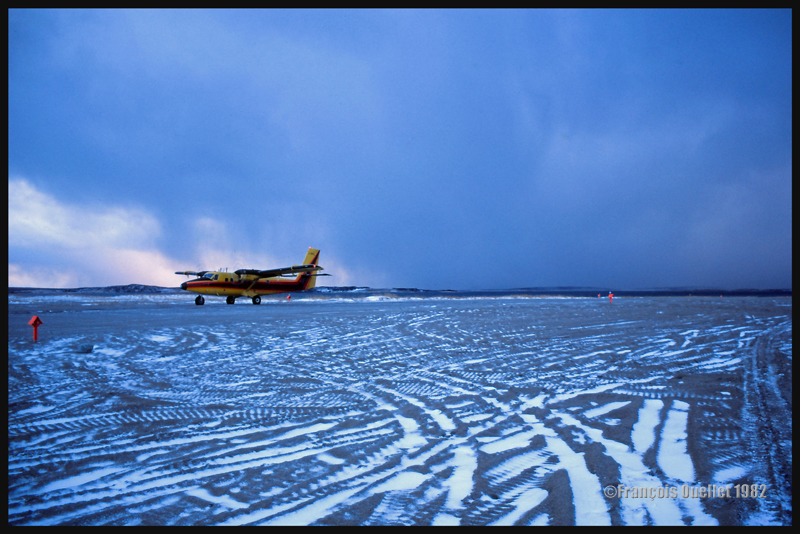
During my first working days as a flight service specialist (FSS) at the Transport Canada flight service station in Inukjuak (CYPH), in 1982, I received a radio call from a Twin Beech 200. The pilot of this aircraft registered in the United States indicated that he wished to land at Inukjuak for a short stopover. Several passengers were on board. I gave him the necessary air traffic services and followed its progress towards the airport, through subsequent radio communications.
It is assumed that a pilot wanting to land at an airport has prepared himself and knows the length and orientation of the runway, as well as its constitution (cement, asphalt, gravel, grass, sand). These are absolutely essential information, like ensuring that there is enough fuel on board the aircraft. This makes the difference between an accident and a successful landing. I doubted that Inukjuak, with its soft sand runway, was suited for an aircraft like the Beech 200.
Being a pilot myself, I was uncomfortable to ask him if he was aware of the characteristics of the Inukjuak runway, because this was such basic information. Moreover, having no experience as a flight service specialist yet, I considered unimaginable that in the early days of a new career, I had to deal with a pilot that was not adequately prepared, and would soon put his life and the lives of his passengers in danger.
I kept on thinking that if the pilot was responsible for this type of aircraft, he must have had hundreds, if not thousands of hours of flying experience. It would be like saying: “Don’t you think that the plane is too big for your abilities?“
The aircraft was now on final for the runway, a few miles away. I decided to ask the fateful question: “Are you aware that you are about to land on a 2000 feet soft sand runway?” The pilot softly said: “OK, we’ll do a missed approach and will head somewhere else. Is Kuujjuarapik acceptable for us? “I answered positively and in the following seconds, the airplane overshot the runway and headed southward for the next airport.
From that day and the following decades, I vowed to never take anything for granted. When in doubt, action is worth more than inaction…
(Next story: A visit at the Inukjuak flight service station (1982))
For more real life stories of a FSS in Inukjuak, click on the following link: Flight service specialist (FSS) in Inukjuak
Here is an edited screen capture that was added recently in the “flight simulation” section above, under “virtual pictures”. This virtual flight was made using Microsoft Flight Simulator (FSX). The scenery, very well executed by Orbx, represents the Palm Springs region, in United States. It is the most recent addition to the collection of virtual airports available for the California region. The F-14, made by Dino Cattaneo, is a freeware (check the free download links that is provided). This combination of plane and airport is certainly going to please the virtual flight enthousiast!
(Precedent story: flight service and the Transport Canada Training Institute in Cornwall)
Summer of 1982. Today is the departure from Montreal towards Inukjuak (CYPH), a northern Quebec Inuit village, part of the Nunavik. There, I will start working as a flight service specialist (FSS) for Transport Canada. Nordair’s Boeing B737 takes off and immediately heads northward. It will fly along James Bay and, upon reaching Hudson Bay, will land in Kuujjuarapik, its final destination. From there, an Austin Airways’s Twin Otter will take us over to Inukjuak , an isolated posting further to the north on the east coast of Hudson Bay.
A Boeing B737 landing on the Kuujjuarapik (CYGW) 5000 feet gravel runway uses special procedures. This is a short runway for a loaded aircraft, and braking is less effective than on asphalt. There is no significant margin for error. The wheels must touch as close as possible to the runway threshold, followed by maximum breaking. Passengers really feel the deceleration. The same calculation applies for takeoff: the pilot positions the aircraft close to the runway threshold then applies both the brakes and maximum thrust, and once the appropriate parameters are reached , releases the brakes. As usual, weight and balance, density of the air, airport altitude as well as direction and strength of the winds are all precisely calculated for the aircraft to be airborne before the end of the runway.
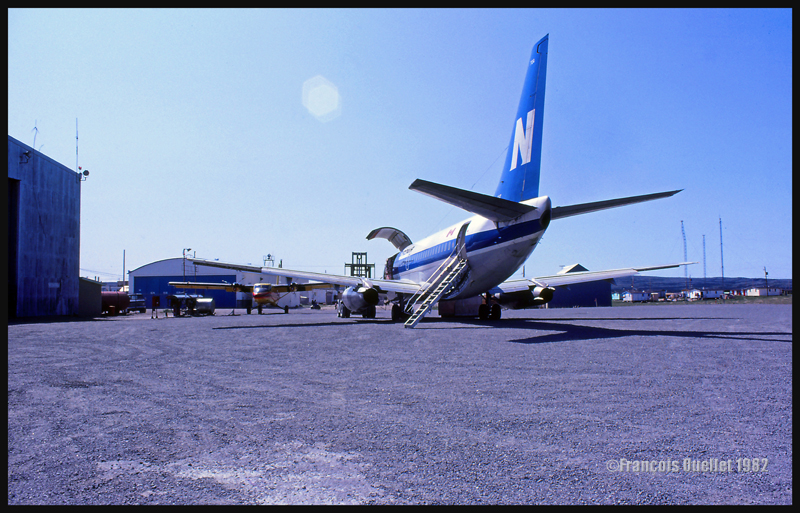
After a short stopover, the Twin Otter is now ready for the trip to Inukjuak. The takeoff from Kuujjuarapik goes without problems. I am sitting in the first class section, behind some cargo held by a net. For champagne, I will have to wait for the boxes to be removed from the hallway.
Then a slow descent is started to Inukjuak. From my window, I can see a small group of narwhals. I feel like I’m dreaming but, after a quick research in scientific documents, learn that narwhals can be found in small groups mainly in the north of Hudson Bay.
The aircraft is now getting closer to Inukjuak. The flaps are extended and it is possible to see the runway before the airplane turns on final. It is two thousand feet long and made only of sand thick enough to render its surface unstable.
Upon arrival, someone comes my way with a motorcycle. He offers me a ride to the staff-house, even if there is only a fifteen or twenty seconds walk. I politely declined the offer, but the personage insists. Not wanting to give a bad impression just as I arrive, I finally accept and try to find a small place on the seat of his tiny motorcycle. Hardly have we started to move into the soft sand that the driver loses control of the vehicle. We fall (what a surprise!), but there is no serious consequence. Welcome to Inukjuak!
For more real life stories of a FSS in Inukjuak, click on the following link: Flight service specialist (FSS) in Inukjuak


